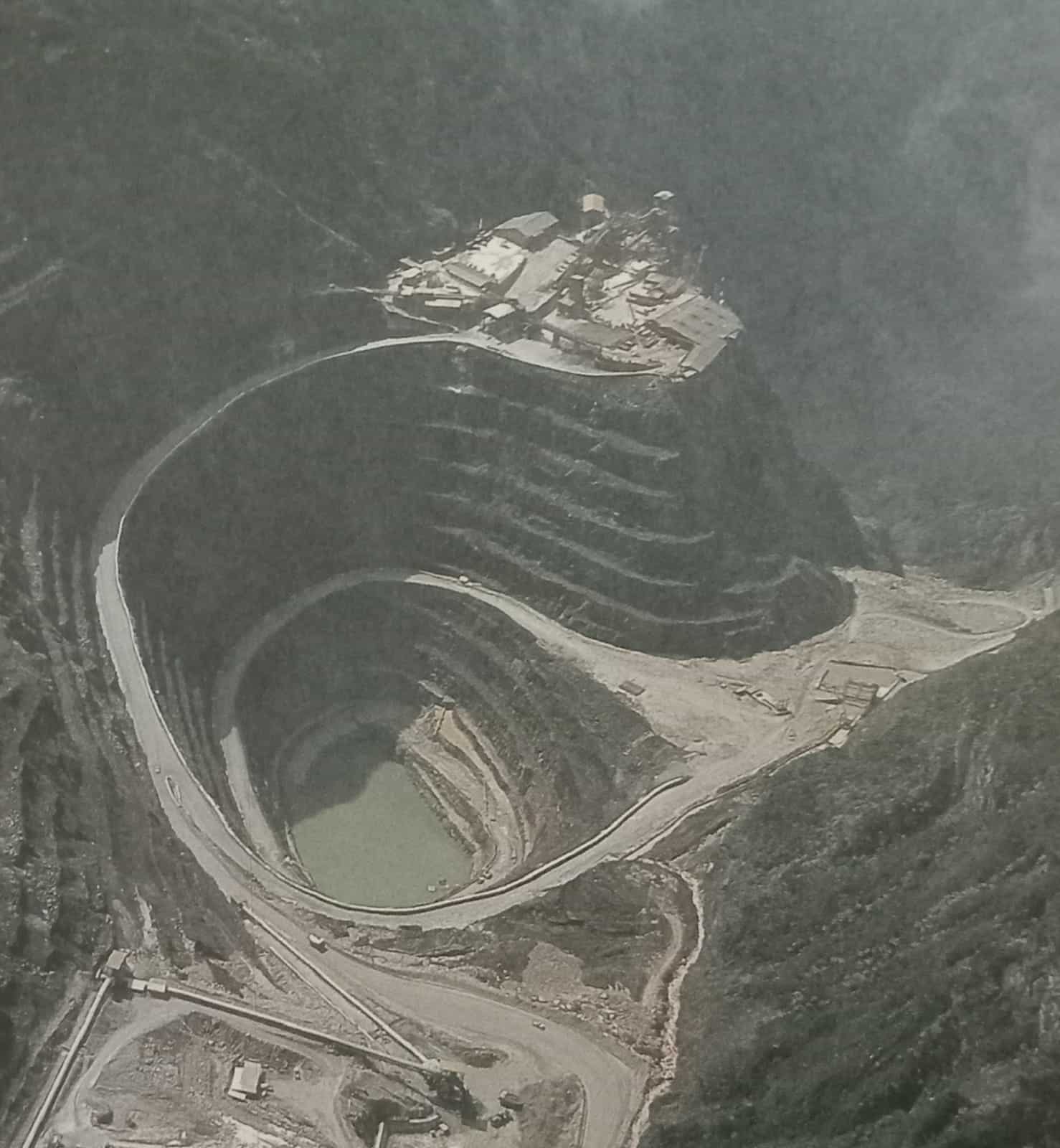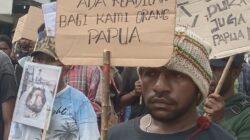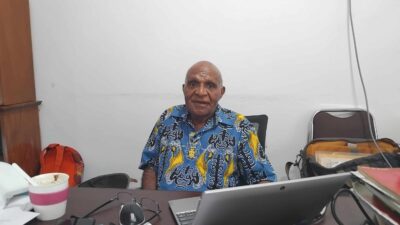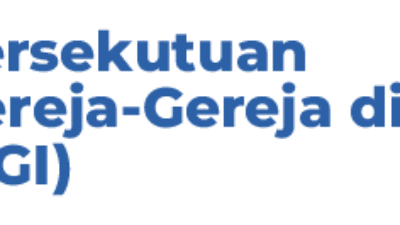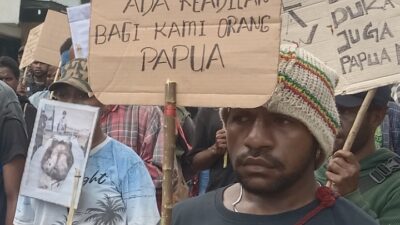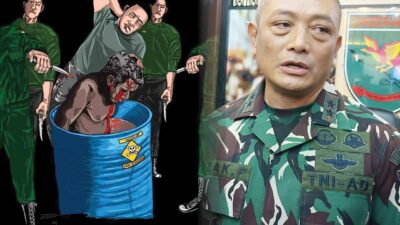Jayapura, Jubi – In March 1973, then President of Indonesia Soeharto, accompanied by the Governor of Irian Jaya Frans Kaisiepo and the Director of Freeport Minerals, officially inaugurated the Ertsberg mine for the first time. This mountain was excavated for copper concentrate to be exported from Nemangkawi abroad.
The mining material, in the form of concentrate, was conveyed from Nemangkawi through pipes to the Port Side harbor and transported by ships to foreign destinations for export. The Amungme people themselves refer to Ertsberg Mountain as Yelsegel-Ongopsegel because of its gleaming appearance, akin to the shining feathers of a Bird of Paradise.
“Mountain birds still exist in Nemangkawi until now because for the Amungme people, ‘Yelsegel-Ongopsegel’ or Ertsberg is a sacred place for our people since ancient times. It is believed that the spirits of our ancestors would stop there before ascending to eternal heaven,” said John Magal, Chairman of the Indigenous Peoples Organization of the Amungme Tribe (Lemasa), to Jubi in Timika, last week.
According to John Magal, when the first bore penetrated the sacred mountain, elders recounted that there was a great light emanating from Ertsberg towards the east of Nemangkawi. “They (the elders) recounted that the spirits of our ancestors had left the sacred mountain,” he said.
“The sacred mountain, by the end of 1972, had all roads built, cable cars smoothly operating, and pipeline routes well installed. In December 1972, the first 10,000 tons of Ertsberg ore were successfully shipped to Japan. The mine was operating smoothly and proudly,” wrote George A Mealey in his book titled Grasberg: Mining the richest and most remote deposit of copper and gold in the world, in the mountains of Irian Jaya, Indonesia.
Furthermore, Mealey, who is also the Mine Development Manager of Freeport, wrote that three months later, President Soeharto arrived, and with a jeep, he drove up to the “copper town” he named Tembagapura and inaugurated the mine. “Unexpectedly, he also renamed West Irian Province to Irian Jaya Province,” Mealey wrote in his book on page 106 of the 384-page book.
He acknowledged that despite growing up in Alaska, USA, to him, the mountains in Irian Jaya were the steepest mountains he has ever seen, and even more impressive is that there was copper mineralization everywhere.
At that time there were no policies regarding Environmental Impact Assessment (EIA). Freeport’s EIA was only conducted in 1997 after the Erstberg mine ended in the 1980s and closed in 1988. In practice, the Erstberg mine operated from December 1972 to 1988 until the copper concentrate dwindled and it was finally closed.
The second mine at Mount Grasberg, or what the Amungme people call Tenogoma or grassy mountain, began exporting concentrate in 1988, and since then, the first EIA was conducted in 1997.
Grasberg to underground mining
Since the Ertsberg mine began to decline from the 1980s until it closed in 1988, Freeport began digging the second mountain, Grasberg, also known as Tenogoma, for open-pit mining.
“I began describing Grasberg to financial advisors as a ‘porphyry copper-gold deposit,’ where copper and gold production could be expected, and possibly silver too. I noted that the geological structure of Grasberg resembled that of Ok Tedi, a porphyry copper-gold deposit being mined in Papua New Guinea. The Freeport team also visited there. Ok Tedi received widespread publicity at the time because of its rich surface gold capping deposit,” Mealey wrote in his book.
Thus, Mealey continued, Grasberg is referred to as a “potential porphyry deposit.” It is said that Grasberg is the world’s largest gold reserve and the third-largest copper reserve. “Grasberg is the most significant mineral reserve discovery of this century,” said George A Mealey.
Now, the Indonesian government’s downstream program has built a smelter plant in Gresik, and practically all mining minerals from the Central Papua Mountains are excavated in underground mines and transported by ship to Surabaya and Gresik.
Antara News mentions that Phase II of the Gresik Smelter is still being pursued to be completed by May 2024. The operation of the Freeport Gresik Smelter will enhance Indonesia’s downstream efforts. As a result, there is added value that the country and all aspects involved can benefit from.
Now, after the closure of the Ertsberg mine, what remains is a mountain with a hole thousands of meters high. The former excavation is now a hollowed lake named Lake Wilson. The name is given to commemorate Freeport’s 1960 expedition leader, Forbes Wilson. (*)


